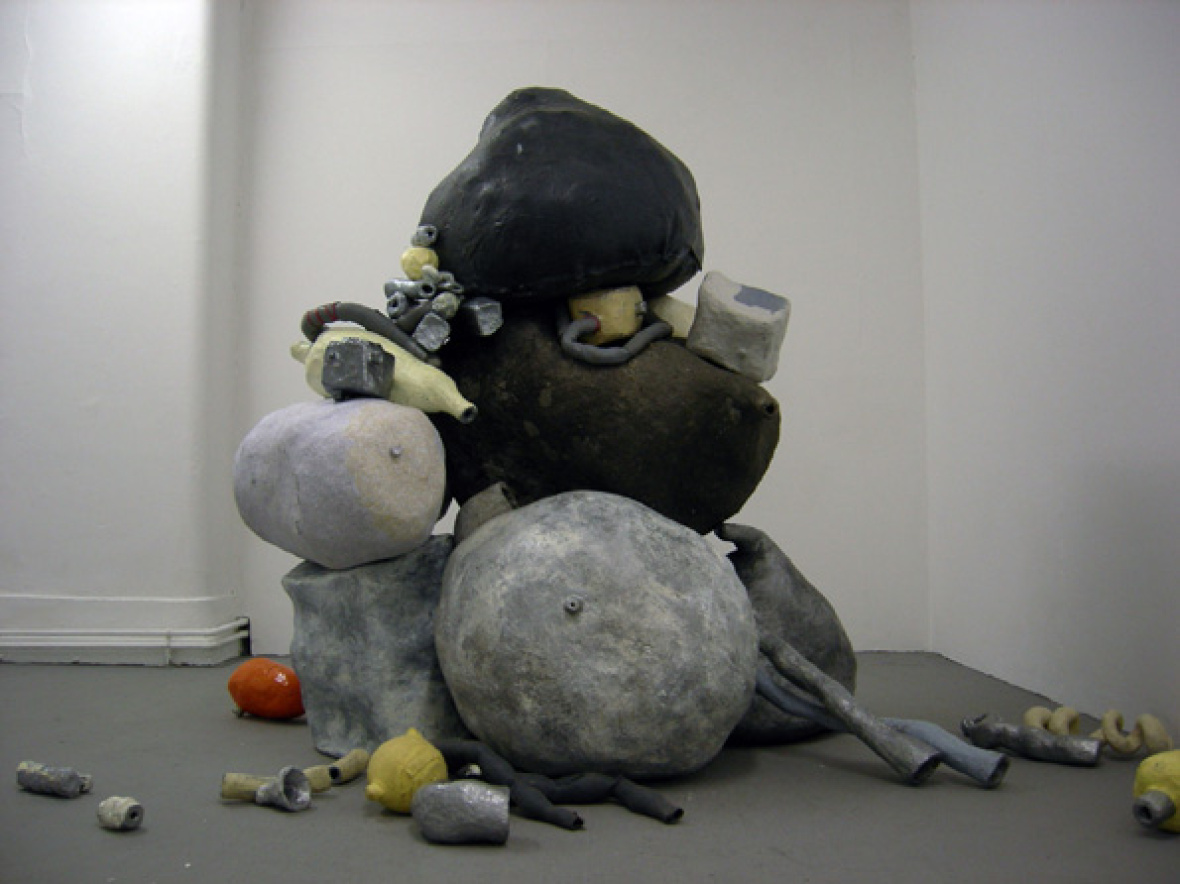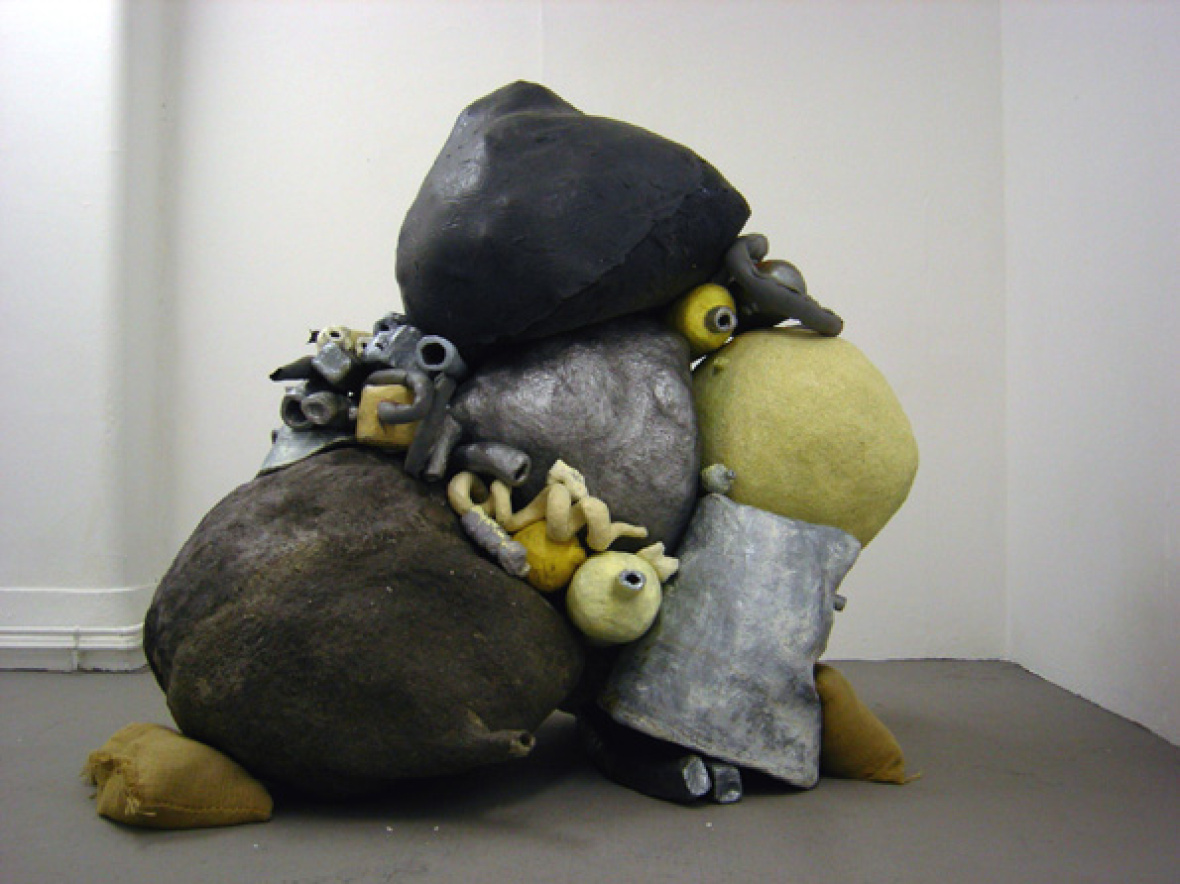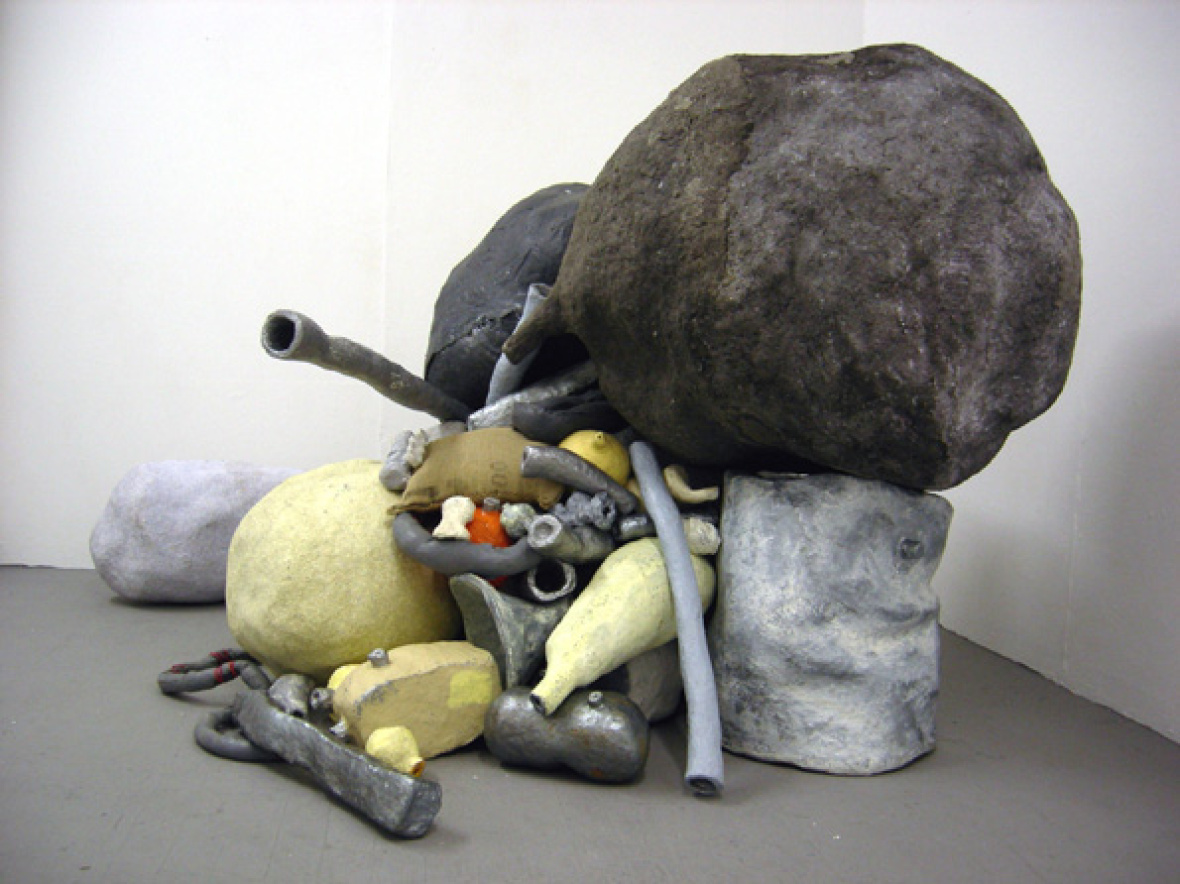Elly Thomas
Play as evolving process in the work of Eduardo Paolozzi, Philip Guston and Tony Oursler
In this practice-related study I use a range of play theory to examine the creative processes behind the work of Eduardo Paolozzi, Philip Guston and Tony Oursler. All three artists express a need to create a semblance of life.
Featured Media






Drawing on the work of D.W. Winnicott, Jean Piaget and Brian Sutton-Smith, the desire to animate matter is explored as the persistence of animistic play during adulthood. For Paolozzi, this desire is articulated as an attempt to "go beyond the Thing, and try to make some kind of presence"; for Guston it is expressed as a need to create "an organic thing that can lead its own life", and for Oursler this manifests through a fascination with video's ability to transform the "inanimate to animate...”
Paradoxically, the study explores play through the work of three artists for whom childhood is not a subject of focus. Stepping away from a retrospective approach, I ask whether it is possible to explore childhood play as a living presence in the now. Can one examine childhood play as a group of activities, objectives and perceptions that evolve to inform the creativity of an adult artist, rather than as processes tied to the past? Comparisons are made between the cultural landscapes of Paolozzi, Guston and Oursler’s individual childhoods and the work they create during artistic maturity. Through these juxtapositions the study explores the lasting presence of childhood play. By concentrating on the artists’ processes the study creates a toolkit of methods that may be as much use to a practitioner as a viewer or art historian.